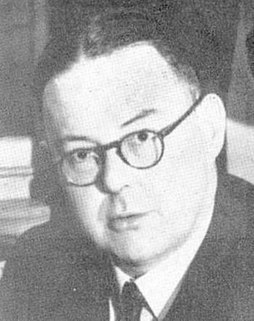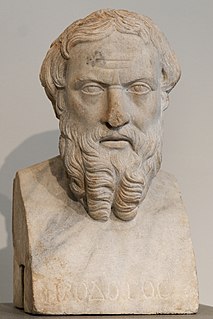The views of Quakers around the world towards homosexuality encompass a range from complete celebration and the practice of same-sex marriage, to the view that homosexuality is sinfully deviant and contrary to God's intentions for sexual expression. The Religious Society of Friends (Quakers) is a historically Christian religious movement founded in 17th-century England; it has around 350,000 members. In Britain, Canada, New Zealand and Australia, many Quakers are supportive of homosexual relationships, while views are divided among U.S. meetings. The majority (52%) of Quakers live in Africa and many there do not support homosexual relationships.

Elias Hicks was a traveling Quaker minister from Long Island, New York. In his ministry he promoted unorthodox doctrines that led to controversy, which caused the first major schism within the Religious Society of Friends. Elias Hicks was the older cousin of the painter Edward Hicks.

The Yearly Meeting of the Religious Society of Friends (Quakers) in Britain, also known as the Britain Yearly Meeting, is a Yearly Meeting of the Religious Society of Friends (Quakers) in England, Scotland, Wales, the Channel Islands and the Isle of Man. It is the national organisation of Quakers living in Britain. Britain Yearly Meeting refers to both the religious gathering and the organisation. "Yearly Meeting" is usually the name given to the annual gathering of British Quakers. Quakers in Britain is the name the organisation is commonly known by.
The Religious Society of Friends began as a movement in England in the mid-17th century in Lancashire. Members are informally known as Quakers, as they were said "to tremble in the way of the Lord". The movement in its early days faced strong opposition and persecution, but it continued to expand across the British Isles and then in the Americas and Africa.
Philadelphia Yearly Meeting of the Religious Society of Friends, or simply Philadelphia Yearly Meeting, or PYM, is the central organizing body for Quaker meetings in the Philadelphia, Pennsylvania, United States, area.
Yearly Meeting is a term used by members of the Religious Society of Friends, or Quakers, to refer to an organization composed of constituent meetings or churches within a geographical area. The constituent meetings are called Monthly Meetings in most of the world; in England, local congregations are now called Area Meetings, in Australia Monthly Meetings are called Local Meetings. "Monthly" and "Yearly" refer to how often the body meets to make decisions. Monthly Meetings are local congregations which hold worship on Sunday. Depending on the Yearly Meeting organization, there may also be Quarterly Meetings, Half-Yearly Meetings, or Regional Meetings, where a number of local Monthly Meetings come together within a Yearly Meeting.
The Yearly Meeting of Aotearoa/New Zealand is the umbrella body and Yearly Meeting of the Religious Society of Friends in New Zealand.
Conservative Friends refers to members of a certain branch of the Religious Society of Friends (Quakers). In the United States of America, Conservative Friends belong to three Yearly Meetings, Ohio, North Carolina, and Iowa. English Friends affiliated with the Conservative branch tend to use the term Primitive, or Plain. There is no single unifying association of Conservative Friends, unlike three of the other branches of Quakerism in America, represented by Friends United Meeting, Evangelical Friends International, and Friends General Conference.

Quakers are members of a historically Christian group of religious movements formally known as the Religious Society of Friends, Society of Friends or Friends Church. Members of the various Quaker movements are all generally united in a belief in the ability of each human being to experientially access "the light within", or "that of God in every one".
The Quaker movement began in England in the Seventeenth Century. Small Quaker groups were planted in various places across Europe during this early period. Quakers in Europe outside Britain and Ireland are not now very numerous although new groups have started in the former Soviet Union and satellite countries. By far the largest national grouping of Quakers in Europe is in Britain.

John Harry Robson Lowe, Robbie to his friends, was an English professional philatelist, stamp dealer and stamp auctioneer.
A Book of Discipline may refer to one of the various books issued by a Yearly Meeting of the Religious Society of Friends, setting out what it means to be a Quaker in that Yearly Meeting. The common name for this book varies from one Yearly Meeting to another and includes Book of Discipline, Faith and Practice, Christian Faith and Practice, Quaker Faith and Practice, Church Government and Handbook of Practice and Procedure. Each Book of Discipline is updated periodically by each Yearly Meeting according to the usual practice of decision making within the Religious Society of Friends.
The architecture of New Zealand is influenced by various cultures but it is predominantly of a European style. Polynesian influence is also seen in some areas.

The National Philatelic Society is one of two national philatelic societies in Great Britain. The other is the Royal Philatelic Society London.

The Roll of Distinguished Philatelists (RDP) is a philatelic award of international scale, created by the Philatelic Congress of Great Britain in 1921. The Roll consists of three pieces of parchment to which the signatories add their names.
David Richard Beech MBE was the curator of the British Library Philatelic Collections from 1983–2013. He is a Fellow and past President of the Royal Philatelic Society London (RPSL). In 2013, it was announced that Beech will receive the Smithsonian Philatelic Achievement Award for outstanding lifetime accomplishments in the field of philately.
Arthur Garratt Dorland was Canada's leading historian on the Religious Society of Friends (Quakers) in Canada.
Alma Gould Dale, "a legendary figure in Canada history," founded the first monthly Quaker meeting in western Canada, at Hartney, Manitoba, in 1899. She represents the Quaker presence in Canada on one of the seventy-five panels in the Quaker Tapestry at Friends' House, in London, where she is credited with a major role in the growth of Quakerism in Canada from 1800 on. On the tapestry, she is depicted driving a palomino team to a Quaker settlement in western Canada, which she drove in all weather. She was well known as a dynamic speaker and was invited to speak in Canada, England, and New Zealand.













